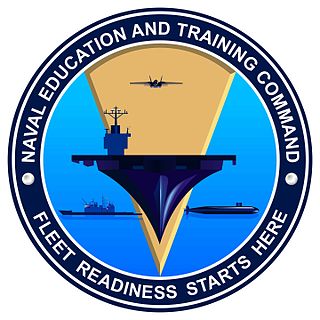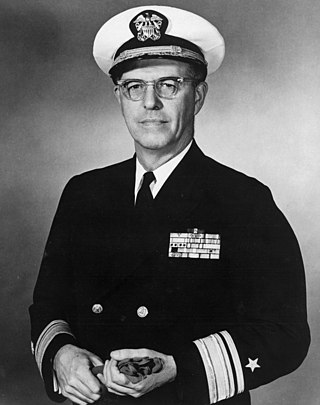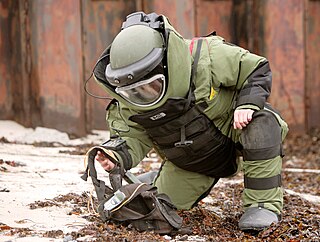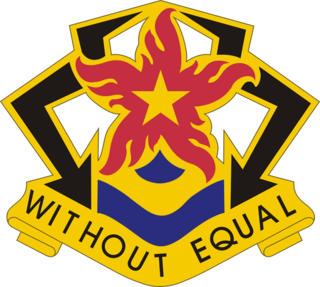Explosive Ordance Disposal (EOD) technology program
History of the program
In 1951, the DoD assigned the U.S. Navy with the responsibility for Joint Service EOD Research and Development (R&D). Initially accomplished at the Naval EOD School, in 1953 a separate organization, the Naval EOD Technical Center, was established to accomplish the R&D tasks. A Joint Service Directive governed the program, and individual Services were allowed to continue their own EOD R&D programs. Following Congressional interest in 1969 regarding the individual Service efforts, DoD directed that all EOD R&D be consolidated under SECNAV as a Single Manager, to eliminate duplication of effort. A Joint Program was developed by the Services that ensured all of their interests were addressed. DoD Directive 5160.62 was first issued in 1971, designating SECNAV as the Single Manager for EOD Technology and Training, a designation that continues today. The Naval EOD Technology Division (NAVEODTECHDIV) is the EOD Technology Center, which the Navy is directed to provide, manage, and maintain.
Requirements and processes
The DoD EOD Technology Program is requirements driven and requires customer participation from the identification of requirements, to the selection of technology projects to satisfy requirements, to the acceptance of the ultimate R&D outputs. The process for customer participation is formal, structured, and documented.
Documentation of the process begins with DoDDir 5160.62 that, in addition to designating SECNAV as Single Manager, directs the appointment by the Navy of an Executive Manager with broad authority to manage the program. It also establishes a Program Board, constituted of flag/general officers from the four Services, to assist the Executive Manager and represent their Services. In addition, the directive establishes a Joint Service Military Technical Acceptance Board (MTAB), which must approve all EOD tools, equipment, procedures, and publications developed by the Navy, prior to their use by the Joint Services. DoDDir 5160.62 (1989), which has recently been revised by the Joint Services and is in the OSD approval process, is implemented by SECNAVINST 5410.116B and by a Joint Service instruction (OPNAVINST 8027.1G, MCO 8027.1D, AR 75-14, AFR 136-8). In addition to the DoD directive and Service implementing instructions, the Program Board issues detailed program guidance by Policy Agreements (PAs). The Program Board meets three to four times each year, or as otherwise required. Each Service maintains a Detachment at the NAVEODnaveodtechdiv to provide Service participation in all of the processes. The OICs of the Detachments constitute the MTAB, and Detachment personnel form two sub-groups of the MTAB, responsible for recommendations to the MTAB relative to approval of tools/equipment and procedures. These personnel interact daily with NAVEODTECHDIV personnel in R&D and procedures development.

Bomb disposal is an explosives engineering profession using the process by which hazardous explosive devices are disabled or otherwise rendered safe. Bomb disposal is an all-encompassing term to describe the separate, but interrelated functions in the military fields of explosive ordnance disposal (EOD) and improvised explosive device disposal (IEDD), and the public safety roles of public safety bomb disposal (PSBD) and the bomb squad.

The Clearance Diving Branch is the specialist diving unit of the Royal Australian Navy (RAN) whose versatile role covers all spheres of military diving, and includes explosive ordnance disposal and maritime counter-terrorism. The Branch has evolved from traditional maritime diving, and explosive ordnance disposal, to include a special operations focus.

The Explosive Ordnance Disposal Badge is a military badge of the United States Armed Forces which recognizes those service members, qualified as explosive ordnance disposal (EOD) technicians, who are specially trained to deal with the construction, deployment, disarmament, and disposal of high explosive munitions including other types of ordnance such as nuclear, biological and chemical weapons along with improvised explosive devices (IED) and improvised nuclear devices (IND). Also known as the “EOD Badge” or "Crab", the decoration is issued by the United States Army, Air Force, Navy and Marine Corps. The EOD Badge is the only occupational badge awarded to all four services under the United States Department of Defense.

Insignias and badges of the United States Navy are military badges issued by the United States Department of the Navy to naval service members who achieve certain qualifications and accomplishments while serving on both active and reserve duty in the United States Navy. Most naval aviation insignia are also permitted for wear on uniforms of the United States Marine Corps.

A clearance diver was originally a specialist naval diver who used explosives underwater to remove obstructions to make harbours and shipping channels safe to navigate, but the term "clearance diver" was later used to include other naval underwater work. Units of clearance divers were first formed during and after World War II to clear ports and harbours in the Mediterranean and Northern Europe of unexploded ordnance and shipwrecks and booby traps laid by the Germans.

United States Navy Explosive Ordnance Disposal technicians render safe all types of ordnance, including improvised, chemical, biological, and nuclear. They perform land and underwater location, identification, render-safe, and recovery of foreign and domestic ordnance. They conduct demolition of hazardous munitions, pyrotechnics, and retrograde explosives using detonation and burning techniques. They forward deploy and fully integrate with the various Combatant Commanders, Special Operations Forces (SOF), and various warfare units within the Navy, Marine Corps, Air Force and Army. They are also called upon to support military and civilian law enforcement agencies, as well as the Secret Service.

The Naval Education and Training Command (NETC) is an enterprise-level shore command of the United States Navy with more than 19,000 military and staff personnel at more than 1,640 subordinate activities, sites, districts, stations, and detachments throughout the world. NETC recruits, trains and delivers those who serve the nation, taking them from "street to fleet" by transforming civilians into highly skilled, operational, and combat ready warfighters.

The Zeus-HLONS, also known as HMMWV, Laser Ordnance Neutralization System, is a solid-state laser weapon which is used by the U.S. military in order to neutralize surface land mines and unexploded ordnance. The Zeus-HLONS system was a co-operative effort between SPARTA, Inc. and Naval EOD Technology Division to demonstrate that a moderate-power commercial solid state laser (SSL) and beam control system could be integrated onto a Humvee and used to clear surface mines, improvised explosive devices (IEDs), or unexploded ordnance from supply routes and minefields.

Naval Surface Warfare Center Crane Division is the principal tenant command located at Naval Support Activity Crane. NSA Crane is a United States Navy installation located approximately 25 miles (40 km) southwest of Bloomington, Indiana, and predominantly located in Martin County, but small parts also extend into Greene and Lawrence counties. It was originally established in 1941 under the Bureau of Ordnance as the Naval Ammunition Depot for the production, testing, and storage of ordnance under the first supplemental Defense Appropriation Act. The base is named after William M. Crane. The base is the third largest naval installation in the world by geographic area and employs approximately 3,300 people. The closest community is the small town of Crane, which lies adjacent to the northwest corner of the facility.

Rear Admiral Draper Laurence Kauffman was an American underwater demolition expert, who served during the 1960s as 44th Superintendent of the United States Naval Academy. During World War II, he organized the first U.S. Navy Combat Demolition Units from which the SEALs and Navy Explosive Ordnance Disposal (EOD) would evolve. His wartime service also included participation in the invasions of Saipan, Tinian, Iwo Jima, and Okinawa.

A bomb suit, Explosive Ordnance Disposal (EOD) suit or a blast suit is a heavy suit of body armor designed to withstand the pressure generated by a bomb and any fragments the bomb may produce. It is usually worn by trained personnel attempting bomb disposal. In contrast to ballistic body armors, which usually focus on protecting the torso and head, a bomb suit must protect all parts of the body, since the dangers posed by a bomb's explosion affect the entire body.

STA-21 or Seaman to Admiral - 21 is a United States Navy commissioning program, designed to enable active-duty sailors to get a college degree and become commissioned officers.

The Navy Expeditionary Combat Command (NECC) is an echelon III command of the United States Navy, which serves as the single functional command to centrally manage current and future readiness, resources, manning, training and equipping of the United States Navy's 21,000 expeditionary forces who are currently serving in every theater of operation. The NECC was established in January 2006. NECC is a subordinate command of the Navy's Fleet Forces Command.

The 184th Ordnance Battalion (EOD) of the United States Army accomplishes the explosive ordnance disposal (EOD) support activity. The EOD battalion operates under United States Army Forces Command (52nd Ordnance Group (EOD)) command and control with several companies (EOD) strategically located within each control area. Installations and MACOMs do not have a direct area support EOD responsibility.

Naval Support Activity Panama City, is a military shore installation of the United States Navy located in Bay County, in Panama City, Florida. Among its various tenant commands, it houses the Naval Surface Warfare Center Panama City Division, the Center for Explosive Ordnance Disposal & Diving (CENEODDIVE), the Navy Experimental Diving Unit (NEDU), and Coast Guard Station Panama City.

The Operational Test and Evaluation Force (OPTEVFOR) is an independent and objective agency within the United States Navy for the operational testing and evaluation (OT&E) of naval aviation, surface warfare, submarine warfare, C4I, cryptologic, and space systems in support Navy and Department of Defense acquisition programs.

A Maritime Special Purpose Force (MSPF) is a United States Marine Corps specialized sub-unit of a Marine expeditionary unit. A MSPF is deployed to give the commanders low profile, two-platoon surgical emplacement in the accessible littoral regions. The MSPF provides the enhanced operational capability and precision skills to complement, enable, and execute selected conventional, maritime special operations. They can also perform operations not resident in traditional amphibious raid companies.

The Ordnance Corps (ORD) is a combat support corps of the Irish Army, a branch of the Defence Forces, that has logistical and operational responsibility for military ordnance in Ireland. The logistical role of the Army Ordnance Corps is to provide technical support to the Defence Forces for the procurement, storage, distribution, inspection, maintenance, repair and disposal of all items of ordnance equipment. The operational role of the Ordnance Corps is to train personnel for and provide the state's bomb disposal capability.

The United States Navy Center for Explosive Ordnance Disposal and Diving (CENEODDIVE) is one of the eleven learning centers responsible for training explosive ordnance disposal technicians and divers in the United States. CENEODDIVE is stationed on Naval Support Activity Panama City (NAS Panama City) in Florida and forms a part of the Naval Education and Training Command. With the exception of the Great Lakes learning site, CENEODDIVE is the only inter-service learning center.




















